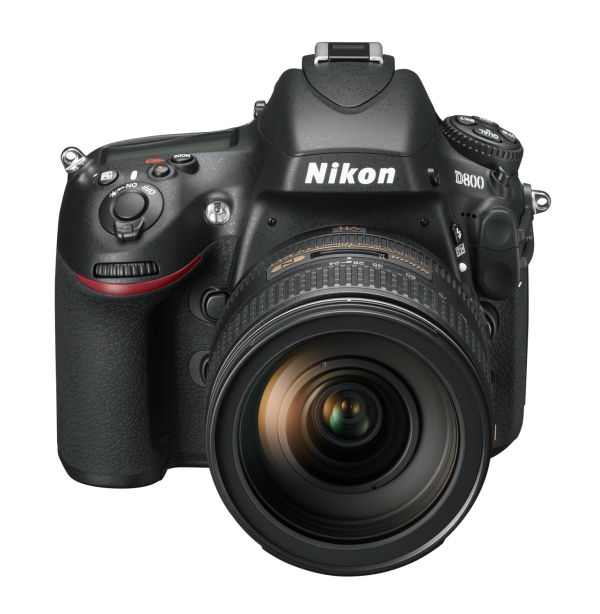
If you fell in love with Nikon’s new flagship full-frame DSLR the D4, but are craving for some more megapixel “oomph”, your wish might be granted in the form of the new astounding 36-megapixel D800. In many ways, the D800’s features mirror that of the D4: the same 91k-pixel metering sensor, the same Expeed 3 image processor, and the same new lightning fast 51-point autofocus system.
Like the D4, the D800 has great video features, such as full HD video recording using B-frame compression for higher-quality H.264 MP4 video, the ability to output uncompressed HDMI, an improved audio metering system, and a convenient power aperture control that doesn’t cause any flickering in the video if the aperture is adjusted while recording.
On the other hand, the D800 falls short in other areas, such as the D4’s jaw-dropping max ISO of 204,800; the D800 is “only” capable of a max ISO of 25,600. Also, the D800 doesn’t have an XQD card slot, which means you’ll have a get a fast CompactFlash card for those high speed burst shoots and full HD video recording. There’s also a standard SD card slot and a USB 3.0 port for fast transfer of files.
But the D800’s mind-blowing spec is surely the 36-megapixel sensor. Nikon has traditionally eschewed megapixel counts for better image performance, and its flagship D4 stuck to a relatively low 16-megapixel sensor. This unprecedented high megapixel count rightly has photographers being a little sceptical.
Yet, at the Singapore launch yesterday, Luke Tan, Senior Executive at Nikon Singapore, said the company has nothing to worry about. “Photographers know that we do more megapixels only when we can guarantee image quality,” he said.
Indeed, Nikon showed off cropped portions of the D800’s 7,360px by 4,912px shots, and the amount of detail in them was incredible. I could even make out the text on a signboard in a photo’s background.
So what’s the difference between the D800 and the D4?
“The D4 is more for photojournalists, photographers on the move,” said Tan. The D800, he continued, is meant for more controlled environments such as studio shoots and weddings.
And then there is, of course, the price. The D800 will retail for an estimated S$4,500, which is actually pretty affordable for a DSLR in this range. It truly gives medium format cameras, which goes upwards of US$10,000, a run for their money.
Bonus: Nikon also unveiled the D800E, which is identical to the D800 except that it lacks anti-aliasing low-pass filter, which should noticeably enhance the sharpness of images. However, the lack of this filter makes images more susceptible to colour moire, which is those wavy lines you see in images with repetitive detail such as fabric.




